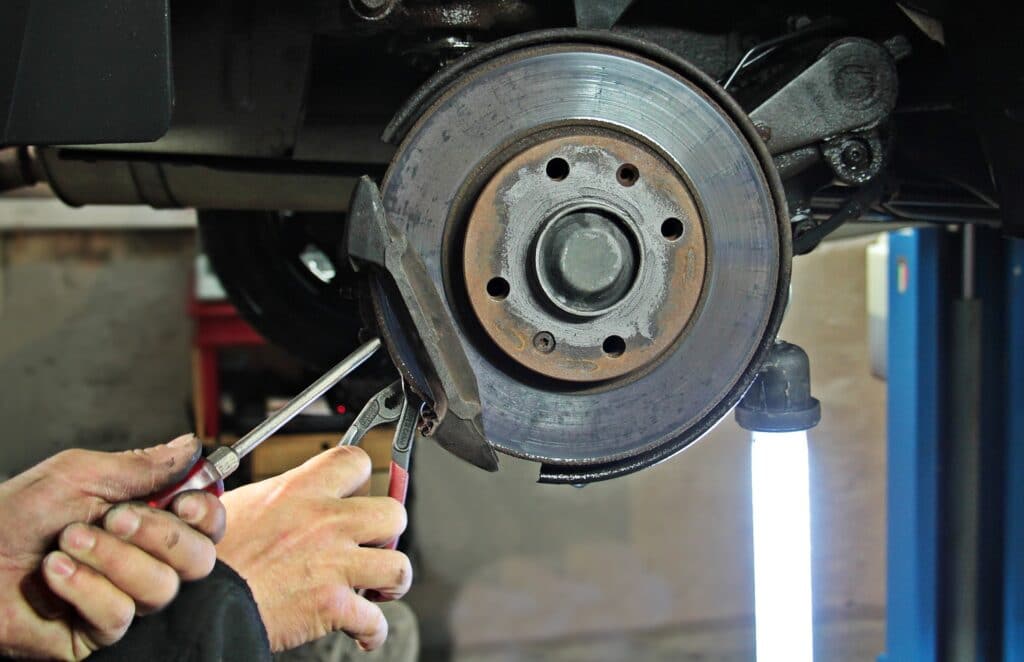
An important skill for any driver is the ability to recognise when certain components are in need of repair or replacement. This is especially true when it comes to your brakes. Your brakes are a critical safety feature of your vehicle, and driving with brakes that are damaged, worn or showing signs of failure can lead to fatal consequences for you, your passengers and other road users.
This month, we’re looking at some of the recognisable warning signs that will appear when your current brake pads are in need of replacement.
1. The car is pulling to one side
This could indicate one of a number of issues, not all related to the brakes. However, it is a common symptom of brake trouble and should be simple to identify. If the car pulls to one side when you apply the brakes – without manipulating the steering wheel – this likely indicates uneven wearing of your brake pads. If the car drifts to one side when the brakes aren’t engaged, your car is suffering from a different issue. Whatever the case, you should have your vehicle inspected by a professional as soon as you notice your vehicle pulling.
2. A screeching noise from the brakes
Your brake pads are designed to create some feedback when they have become worn to a certain degree, and a prolonged screeching noise is one of the most distinctive forms. The screeching will be high pitched and should be audible through closed windows. In most cases, a screeching noise will indicate worn brake pads, but if this only happens rarely, the noise may just indicate a that a layer of rust has built up over the rotor – usually from moisture when the car is idle. The noise will disappear once the rust has worn off, but if it continues regularly, you should definitely have your brake pads inspected and replaced.
3. The brake pads are visibly thin
You can also identify worn brake pads simply by looking at them through your spokes. The brake pad will be attached to the rotor, and shouldn’t be any thinner than ¼ inch. If the pad is visibly thinner than this, you should have your pads replaced immediately. As with any brake pad problem, continuing to drive on worn or damaged brakes is incredibly dangerous, and will only become more so as time goes on.
4. Excessive amounts of brake dust
Brake dust is a normal by-product of your pads and rotors; a black residue which appears as the mechanisms gradually wear down. If you start to notice excessive brake dust forming on your wheels, it is likely a sign that your pads are wearing rapidly. It’s smart to have your pads inspected once you notice this before they become worn any further, leading to more dangerous issues in the future.
5. A grinding noise is coming from the brakes
As we have said, continuing to drive with worn brake pads is dangerous, and you should never let your pads get to the point where you can hear a harsh, metallic grinding noise. The grinding noise is the sound of metal on metal, and indicates brake pads which have been completely worn down. You will not only need new brake pads, but you will also need to have your rotors inspected for damage, with replacement rotors potentially required.
Driving in this condition is incredibly hazardous; braking will naturally be much less effective, and might fail entirely, meaning your presence on the road is a danger to all other road users. Regularly checking the condition of your brake pads should prevent them from reaching this state, but if they do, have a qualified mechanic inspect your vehicle immediately.
Oaks Services are a leading provider of first rate brake replacement and repairs for cars of any model or make. Regular maintenance of your brakes is incredibly important to the safety of your vehicle, ands our experienced and professional team of engineers can help you solve any brake problems you might have. For more information on our services, or to book your vehicle in for an appointment, don’t hesitate to get in touch with us today.

